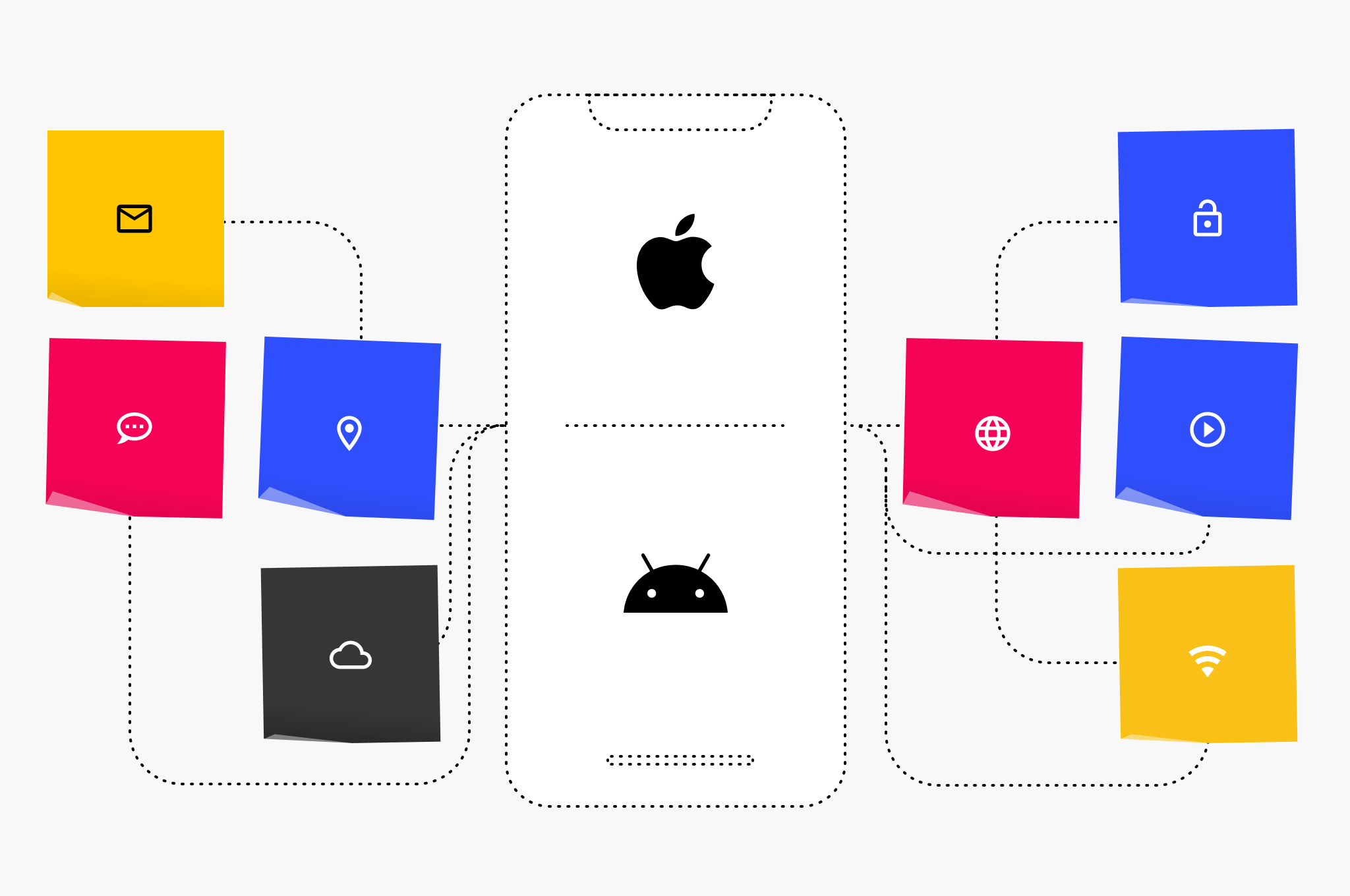
No matter how technical that may sound to you, we at Moqod treat the choice of the platform as a business question.
And here we will explain why.
Cross-platform ambassadors
We as software developers are cross-platform ambassadors, we favor everything that makes things faster. We are also concept-validation believers, trusting rapid market-fit feedback loops as the only strategic way to build a successful app.
However, the fastest route is not always the optimal one. So when you decide what platform to choose for your future business, we encourage you to think about its nature first.
Of course, what comes to your mind first is that developing an application for different platforms (iOS and Android) at once is often very expensive. What options do you have to eliminate a budget while building your MVP:
- Choose only one platform (native development).
- Choose cross-platform development for two platforms.
Pros & Cons
Cross-platform development has it’s pros and cons vs building a native app. These characteristics make it more or less applicable to the app with certain types of users. For example, Moqod developed a Flutter-based app with Bittiq for Bunq, the first online-only bank in the Netherlands.
So let’s take a closer Pros & Cons of Cross-platform development through the optics of business. We will cover those we find critical and the most obvious.
Pro: it’s Faster.
Con: It’s less reliable.
Based on these, the cross-platform app would work well when you are able to get fast feedback from fewer users. Especially, when your customer development process is personalized and involves eye-to-eye interviews. In this case, users would not complain about the performance too much.
This sounds like a B2B market, right? Unfortunately, in most cases, B2B users are less perceptive to outages, as long as the tool helps them to solve the task.
Obviously, it’s not a good idea to use a multi-platform app with massive consumer cohorts. When the outage occurs, they will not get back and you will never know was it a good or bad business idea.
B2B & B2C
These differences justify why the approach to development B2B and B2C applications are different and why B2B, in general, has lower development costs.
Pro: It’s good for prototyping.
Con: It gives fewer opportunities for UX/UI.
On the consumer markets, especially in retail, every tiny distortion in UX costs lost revenue. So don’t go to cross-platform development if your app audience is sensitive to the design.
However, that might work if your audience is a niche, with specific requests.
Pro: It gives you a wider audience.
Con: it’s less customizable.
With cross-platform app development, you’ve got a great market reach. It could be run on Android, iOS, Windows, BlackBerry, and other OS devices. It could be a great start to collect market data for future understanding if your app MVP is worth focusing on marketing efforts or not.
However, if your clients are not homogenous in regard to consumer behavior, a lack of customization might limit out your abilities for testing and validating features.
This set also profs, that cross-platform development is a better choice for the B2B than for the B2C market.
By the way, we have prepared a great article about other differences in approaches to development comparing B2B and B2C apps, check it out too.
ASO perspective
I’d add one more thing from the App Store Optimization (ASO) perspective. Don’t go for cross-platform if you rely your app promotion on the organic growth within AppStore and Google Play Store. These two have a different set of requirements and developing an app simultaneously for Android and IOS limits out your possibilities for fulfilling them.
We saw a few clients of ours whose initial plan was not to go on the App Store. However, after some pivot, they decided to go upload their app to the App Store. That required us to implement a lot of changes in functionalities, involving many tricks and hacks. That would be almost impossible to do if the app was initially developed within cross-platform frameworks. I’ll cover this case in detail in my future article.
As for the tools to use for cross-platform development, we at Moqod are fans of Flutter, and we explained here why.
Conclusion
Developing an app for multi-platform simultaneously looks very attractive under sterile conditions. In real life though, you might want to sacrifice a certain part of the market, to get the most of the other part. So consider, who your users are, look at the app through their eyes and the choice of the solution will become more clear.







